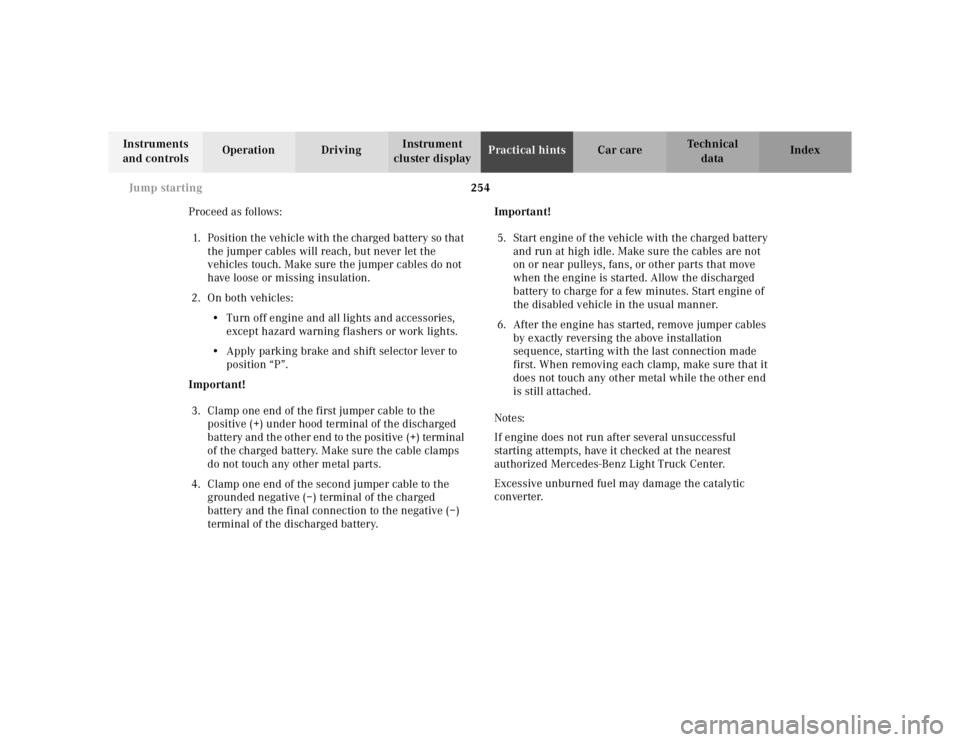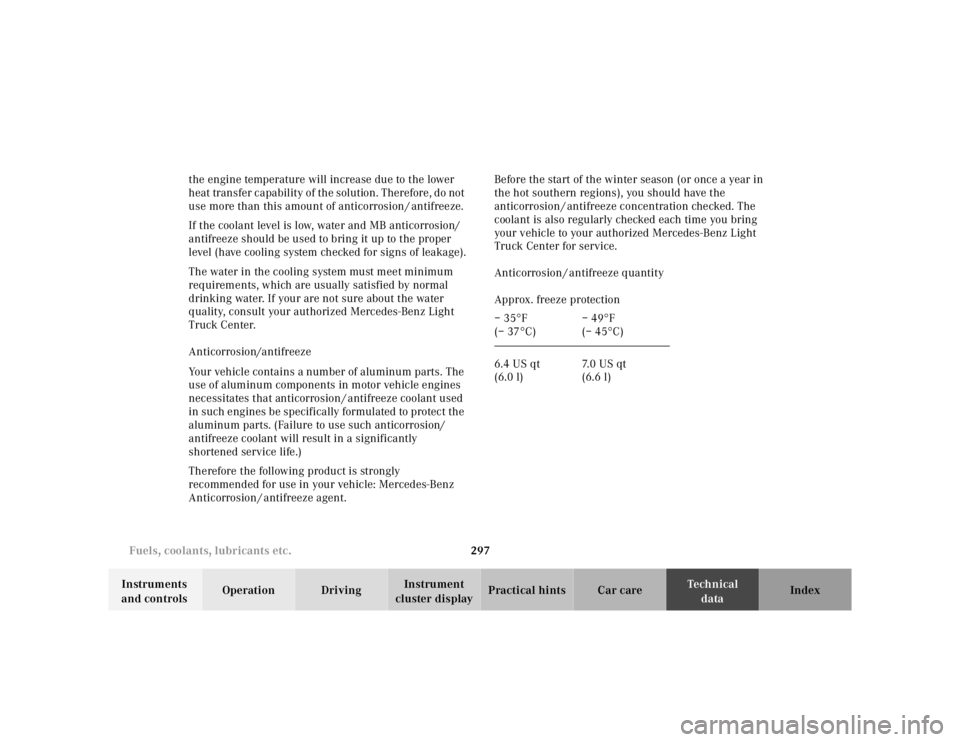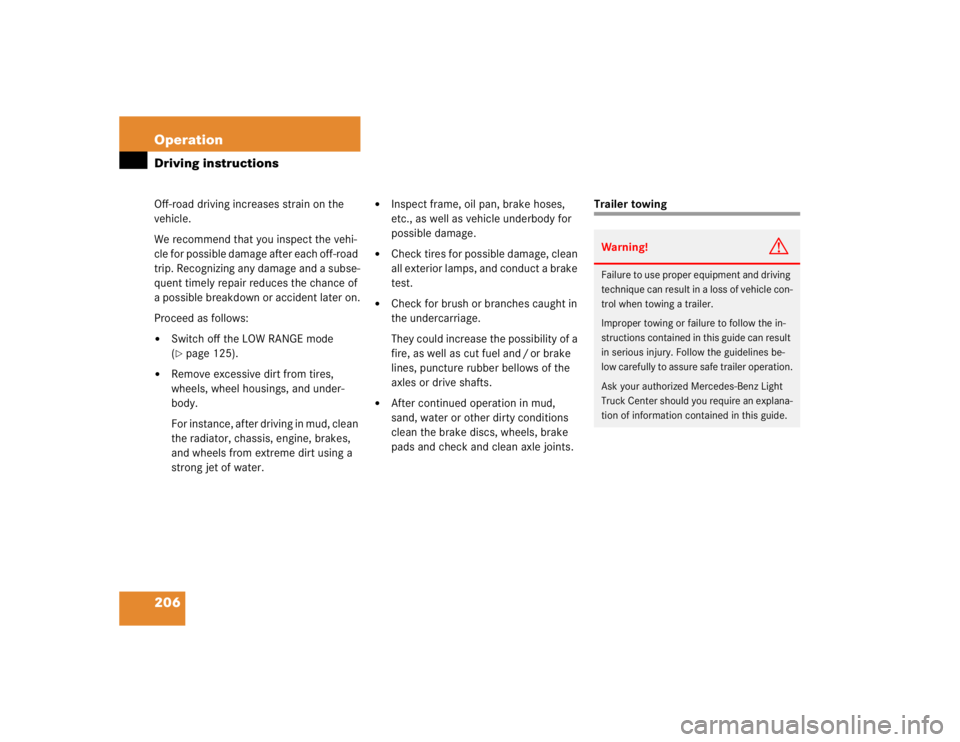Page 721 of 4133

254
Jump starting
Te ch n ica l
data
Instruments
and controls Operation Driving
Instrument
cluster display Practical hints
Car care Index
Proceed as follows: 1. Position the vehicle with the charged battery so that the jumper cables will reach, but never let the
vehicles touch. Make sure the jumper cables do not
have loose or missing insulation.
2. On both vehicles: • Turn off engine and all lights and accessories,
except hazard warning flashers or work lights.
• Apply parking brake and shift selector lever to
position “P”.
Important!
3. Clamp one end of the first jumper cable to the positive (+) under hood terminal of the discharged
battery and the other end to the positive (+) terminal
of the charged battery. Make sure the cable clamps
do not touch any other metal parts.
4. Clamp one end of the second jumper cable to the grounded negative (–) terminal of the charged
battery and the final connection to the negative (–)
terminal of the discharged battery. Important!
5. Start engine of the vehicle with the charged battery and run at high idle. Make sure the cables are not
on or near pulleys, fans, or other parts that move
when the engine is started. Allow the discharged
battery to charge for a few minutes. Start engine of
the disabled vehicle in the usual manner.
6. After the engine has started, remove jumper cables by exactly reversing the above installation
sequence, starting with the last connection made
first. When removing each clamp, make sure that it
does not touch any other metal while the other end
is still attached.
Notes:
If engine does not run after several unsuccessful
starting attempts, have it checked at the nearest
authorized Mercedes-Benz Light Truck Center.
Excessive unburned fuel may damage the catalytic
converter.
Page 764 of 4133

297
Fuels, coolants, lubricants etc.
Te ch n ica l
data
Instruments
and controls Operation Driving
Instrument
cluster display Practical hints Car care Index
the engine temperature will increase due to the lower
heat transfer capability of the solution. Therefore, do not
use more than this amount of anticorrosion / antifreeze.
If the coolant level is low, water and MB anticorrosion/
antifreeze should be used to bring it up to the proper
level (have cooling system checked for signs of leakage).
The water in the cooling system must meet minimum
requirements, which are usually satisfied by normal
drinking water. If your are not sure about the water
quality, consult your authorized Mercedes-Benz Light
Truck Center.
Anticorrosion/antifreeze
Your vehicle contains a number of aluminum parts. The
use of aluminum components in motor vehicle engines
necessitates that anticorrosion / antifreeze coolant used
in such engines be specifically formulated to protect the
aluminum parts. (Failure to use such anticorrosion/
antifreeze coolant will result in a significantly
shortened service life.)
Therefore the following product is strongly
recommended for use in your vehicle: Mercedes-Benz
Anticorrosion / antifreeze agent. Before the start of the winter season (or once a year in
the hot southern regions), you should have the
anticorrosion / antifreeze concentration checked. The
coolant is also regularly checked each time you bring
your vehicle to your authorized Mercedes-Benz Light
Truck Center for service.
Anticorrosion / antifreeze quantity
Approx. freeze protection
– 35 °F
(– 37 °C) – 49
°F
(– 45 °C)
6.4 US qt
(6.0 l) 7. 0 U S q t
(6.6 l)
Page 856 of 4133
52 Getting startedDrivingThe coolant temperature is over 248°F
(120°C)
The coolant is too hot and is no longer
cooling the engine.�
Stop the vehicle as soon as possible
and turn off the engine. Allow engine
and coolant to cool.
�
Check the coolant level and add cool-
ant if necessary (
�page 222).In case of accident
If the vehicle is leaking gasoline:
�
Do not start the engine under any cir-
cumstances.
�
Notify local fire and / or police authori-
ties.
If the extent of the damage cannot be de-
termined:
�
Notify an authorized Mercedes-Benz
Light Truck Center.
If no damage can be determined on the
�
major assemblies
�
fuel system
�
engine mount:
�
Start the engine in the usual manner.
Page 862 of 4133

58 Safety and SecurityOccupant safety
�Occupant safetyIn this section you will learn the most im-
portant facts about the restraint systems
of the vehicle.
The restraint systems are�
Seat belts
�
Emergency tensioning device
�
Airbags
�
Child seat
�
Child seat recognition
�
Lower anchors and tethers for children
(LATCH)
As independent systems, their protective
effects work in conjunction with each
other.The 1 indicator lamp in the instrument
cluster (
�page 26) comes on for about
four seconds when you turn the key in the
steering lock to position2. It goes out
when you start the engine. This shows that
the restraint systems are operational.
If the lamp does not come on at all or if it
fails to extinguish after approximately four
seconds or if it comes on thereafter, a mal-
function in the system has been detected.
More information can be found in the
“Practical hints” section (
�page 255).
iFor information on infants and children
traveling with you in the vehicle and
restraint systems for infants and chil-
dren, see “Children in the vehicle”
(�page 67).
Warning!
G
In the event that the 1malfunction indi-
cator lamp comes on during driving or does
not come at all, the SRS may not be opera-
tional.
For your safety, we strongly recommend
that you visit an authorized Mercedes-Benz
Light Truck Center immediately to have the
system checked; otherwise the SRS may not
be activated when needed in an accident,
which could result in serious or fatal injury,
or it might deploy unexpectedly and unnec-
essarily which could also result in injury.
Improper work on the restraint systems, in-
cluding incorrect installation and removal,
can lead to possible injury through an unin-
tended activation of the SRS.
In addition, through improper work there is
a risk of rendering the SRS inoperative or
causing unintended airbag deployment.
Work on the SRS must therefore only be per-
formed by qualified technicians. Contact
your authorized Mercedes-Benz Light Truck
Center.
Page 928 of 4133

124 Controls in detailAutomatic transmissionTowing a trailer
If you tow a trailer, note the following
points:�
Manually shift to a lower gear range
(4,3, 2, 1), if the transmission hunts
between gears on inclines
(�page 121).
A lower gear range and reduction of
speed reduces the change to overload
or overheat the engine.
�
At very steep inclines switch transfer
case to LOW RANGE mode
(�page 125).
For more information on trailer towing, see
the “Operation” section (
�page 206).Emergency operation (Limp Home
Mode)
If vehicle acceleration worsens or the
transmission no longer shifts, the trans-
mission is most likely operating in limp
home (emergency operation) mode. In this
mode only second gear and reverse gear
can be activated.�
Stop the vehicle.
�
Move gear selector lever to positionP.
�
Turn off the engine.
�
Wait at least ten seconds before
restarting.
�
Restart the engine.
�
Move selector lever to positionD
(for second gear) orR.
�
Have the transmission checked at an
authorized Mercedes-Benz Light Truck
Center as soon as possible.
Page 944 of 4133

140 Controls in detailAutomatic climate control
Residual heat and ventilation
With the engine switched off, it is possible
to continue to heat or ventilate the interior
for up to 30 minutes. This feature makes
use of the residual heat produced by the
engine.
Activating�
Turn the key in the steering lock to
position0 or1 (
�page 33).
�
Press button° (
�page 135).
The indicator lamp on button°
comes on.Deactivating
�
Press button°.
The indicator lamp on button°
goes out.
!If the °button on the automatic
climate control panel starts to flash,
this indicates that the air conditioning
system is losing refrigerant. The com-
pressor has turned itself off. The air
conditioning cannot be turned on
again.
Have the air conditioning system
checked at the nearest authorized
Mercedes-Benz Light Truck Center.
iHow long the system will provide heat-
ing depends on the coolant tempera-
ture and the temperature set in the
climate control. The blower will run at
lower speed regardless of the air vol-
ume control setting.
iThe residual heat is automatically
turned off:�
when the ignition is switched on
�
after about 30 minutes
�
if the coolant temperature is too
low
�
if the battery voltage drops
Page 1010 of 4133

206 OperationDriving instructionsOff-road driving increases strain on the
vehicle.
We recommend that you inspect the vehi-
cle for possible damage after each off-road
trip. Recognizing any damage and a subse-
quent timely repair reduces the chance of
a possible breakdown or accident later on.
Proceed as follows:�
Switch off the LOW RANGE mode
(�page 125).
�
Remove excessive dirt from tires,
wheels, wheel housings, and under-
body.
For instance, after driving in mud, clean
the radiator, chassis, engine, brakes,
and wheels from extreme dirt using a
strong jet of water.
�
Inspect frame, oil pan, brake hoses,
etc., as well as vehicle underbody for
possible damage.
�
Check tires for possible damage, clean
all exterior lamps, and conduct a brake
test.
�
Check for brush or branches caught in
the undercarriage.
They could increase the possibility of a
fire, as well as cut fuel and / or brake
lines, puncture rubber bellows of the
axles or drive shafts.
�
After continued operation in mud,
sand, water or other dirty conditions
clean the brake discs, wheels, brake
pads and check and clean axle joints.
Trailer towingWarning!
G
Failure to use proper equipment and driving
technique can result in a loss of vehicle con-
trol when towing a trailer.
Improper towing or failure to follow the in-
structions contained in this guide can result
in serious injury. Follow the guidelines be-
low carefully to assure safe trailer operation.
Ask your authorized Mercedes-Benz Light
Truck Center should you require an explana-
tion of information contained in this guide.
Page 1020 of 4133
216 OperationAt the gas stationEngine oil level
More information on engine oil see “Engine
oil” (
�page 218).Vehicle lighting
Check function and cleanliness. More in-
formation on replacing light bulbs can be
found in the “Practical hints” section
(
�page 266).
Tire inflation pressure
More information on tire inflation pressure
can be found in the “Operation” section
(�page 227).
!If you find that the brake fluid in the
brake fluid reservoir has fallen to the
minimum mark or below, have the
brake system checked for brake pad
thickness and leaks immediately. Noti-
fy an authorized Mercedes-Benz Light
Truck Center immediately. Do not add
brake fluid as this will not solve the
problem. For more information, see
“Practical Hints” (
�page 245).